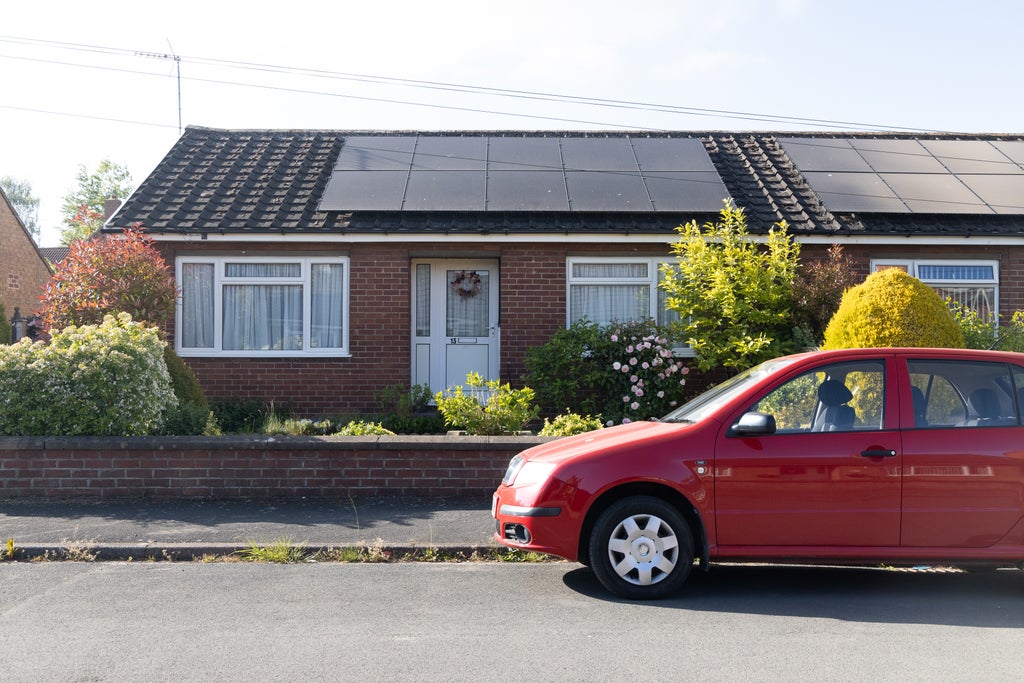The impact of climate change on the UK's social and private housing stock is escalating beyond abstract forecasts. Crucially, the major financial institutions backing these properties - insurers and lenders - are not only aware of the risk but are actively measuring it and pricing it into their models.
The key disconnect for the property technology sector is this: insurers and lenders are tracking the climate risks facing Britain's homes, so why aren't the owners?

What climate risks do landlords and homeowners face?
Property owners face two primary climate-related risks: physical and transition.
Physical risks involve direct damage from increasingly severe weather:
- Acute events: Flooding, wildfires, and extreme storms cause immediate, costly repairs and spikes in insurance premiums.
- Chronic changes: Rising sea levels and prolonged heat increase maintenance costs and can lead to structural issues like subsidence.
Transition risks stem from the economic shift to a low-carbon economy. This includes new building performance regulations, higher carbon pricing, and increasing tenant or buyer demand for energy-efficient, climate-resilient properties, impacting long-term asset value.
We support landlords and homeowners with the transition - with advice provided to over 2 million homes in the past year - but there is noticeably less attention given to physical risks.
For housing providers and portfolio managers, understanding these evolving physical threats - from flooding and coastal erosion to subsidence and wildfire risk - is critical to protecting both assets and residents. The specific risks are always location-dependent, so a proactive, data-led strategy is essential for building climate resilience.

Water: the dual threat of flooding and scarcity
Changing weather patterns are introducing extreme variability, leading to both too much and too little water, often in the same year.
The flood and erosion challenge
Increased global temperatures contribute to higher sea levels, more intense storm surges, and heavier winter rainfall. This translates directly to an elevated risk of coastal, river, and surface water flooding across the UK.
· Financial and social impact: Flood risk leads to significantly higher insurance premiums, which can be prohibitively expensive for both homeowners and tenants, potentially pushing residents into a high-risk, uninsured position. For properties in areas where authorities withdraw funding for flood and coastal erosion defences, the risk is the outright loss of homes to the sea, leading to psychological distress and immediate property devaluation.
· Quality of life: The constant threat of flooding, and related devaluation, fundamentally reduces the desirability of an area and severely impacts residents' quality of life.
Water scarcity and competition
In contrast to winter deluges, reduced summer rainfall combined with higher water demand due to warmer temperatures will increasingly stress water resources. This can result in higher bills, lower water pressure, or widespread usage restrictions, impacting the daily lives of residents.
Heat: overheating and public health risks
Rising average temperatures and more frequent, prolonged heat waves are of increasing concern in housing management, posing direct threats to the most vulnerable residents.
· Vulnerable residents: High temperatures present considerable health risks for vulnerable people, including the elderly, the very young, and those with pre-existing medical conditions. Extreme, long-lasting heat waves can be fatal, as tragically demonstrated during the 2003 European heat wave.
· Urban heat island effect: This problem is compounded in cities by the 'urban heat island effect,' where hard surfaces and buildings absorb heat during the day and slowly release it overnight, preventing homes from cooling down and increasing discomfort and health risks.
Ground instability: the growing threat of subsidence
Subsidence, the sinking of ground beneath a structure, is projected to become a major and expanding threat to UK housing stock, driven by the shift towards hotter, drier summers.
· Shrink-swell mechanism: Hotter and drier summers lead to prolonged periods of low soil moisture. This causes highly absorbent clay-rich soils to shrink significantly as they dry out. This ground instability can result in serious structural damage to the house's fabric, typically seen as large, diagonal cracks in walls, sticking doors, and uneven floors.
· Cost and scope: Damage from subsidence leads to higher insurance costs and can require homeowners and social landlords to pay significant, potentially unmanageable, upfront costs for remediation. Projections suggest the number of homes facing high risk from shrink-swell subsidence could increase substantially by 2050, with the risk zone expanding into regions that were historically safe.
· Vulnerability: Older properties with shallower foundations are particularly susceptible to this risk.
Fire: a new risk at the rural-urban boundary
While traditionally associated with Mediterranean climates, wildfire is an increasing risk at the rural-urban interface across the UK.
· Fuel and ignition: Warmer, drier conditions and heat waves increase the flammability of vegetation. Extended dry spells create ample dry fuel (grass, gorse, peat, and dead wood) in open habitats like heathlands and moorlands. When ignited (almost always due to human behaviour in the UK), fires start more easily, spread rapidly and grow more intense in drier climates.
· Direct threat: Homes situated near these landscapes face a direct threat of being destroyed or severely damaged by fast-moving fires, making wildfire risk monitoring an essential component of modern asset management.
The financial sector's climate shift
Insurers and lenders can no longer rely on past weather patterns and need to protect assets. They are using sophisticated models, often based on work from the Met Office and other national bodies, to predict future scenarios and understand related risk.
- Future flood risk: Aviva's analysis shows the number of homes at risk from flooding in England could rise by 27% to 8 million properties by 2050. Lenders must factor this long-term risk into a 25-year mortgage.
- Subsidence: According to the British Geological Society, the total number of properties in subsidence risk zones in the UK could rise from 5 million to 6.45 million by mid-century. This is driven by hotter, drier summers punctuated by severe rainfall, particularly in clay-rich areas like South-East England.
- Insurer action: The Association of British Insurers (ABI) and major firms like Aviva are heavily concerned by UK property’s resilience. The Flood Re Build Back Better scheme, supported by most insurers, offers up to £10,000 for homeowners to install Property Flood Resilience (PFR) measures after a flood, reflecting a shift from simple indemnity to risk mitigation. This action is vital as the temporary Flood Re scheme ends in 2039.
This data-driven vigilance means climate risk is directly influencing the cost and availability of insurance, which is often a prerequisite for lending. Failure to adapt, therefore, creates a risk of uninsurable and potentially unmortgageable properties – an outcome we are seeing at scale in the USA as a result of heightened wildfire risks.
The emerging value of resilience and retrofit
While retrofit has long been promoted for saving energy, it is not yet inextricably linked with climate resilience – despite the Climate Change Committee (CCC) and others recommending the inclusion of climate risk in EPCs.
The Climate Change Committee (CCC) has repeatedly warned that new and existing homes must be adapted for extreme heat. The CCC recommends extending Part O Building Regulation requirements (which prevent excessive heat) to the refurbishment of existing homes to encourage innovation in passive cooling. It advocates that retrofitting for energy efficiency should also integrate resilience to avoid unintended consequences, such as overheating due to increased insulation without proper ventilation.
Alignment of works offers saving and reduces the hassle for tenants. Resilience measures can also significantly reduce recovery time and cost after a flood event. The cost of installing PFR (e.g., self-closing airbricks, raised electrics) in a new home is around £1,000, offering a tenfold reduction over comparable retrofit costs. Similarly, mainstreaming Sustainable Urban Drainage Systems (SuDS) is a key call for change to manage increasing surface water risk.
Despite the benefit of resilience, it is not embedded in the Decent Homes Standard. Instead, the Government is considering guidance to accompany the reformed Standard, advising landlords on adaptations to climate that landlords may want to consider, and the benefits of water efficient devices. It appears likely that proactive risk management and lender requirements could prompt action faster than this guidance.
The opportunity for data-led resilience
Existing systems and services could be used to bridge the information gap between the financial sector's concern and the owners’ awareness.
- Translating risk: Homeowners struggle to understand flood risk, with one in four reportedly unaware if their home is at risk. Data-led services like Portfolio and Net Zero Hub can leverage existing government flood maps and insurer-grade climate projections to give property- and risk-specific ratings alongside the energy performance analysis.
- Integrating retrofit and resilience: The goal should be a holistic approach. Retrofit projects (like new insulation or low-carbon heating) could include a resilience assessment (e.g., advising on solar-reflective films for heat, or non-return valves for flood), and there are efficiencies in aligning works.
- Connecting finance: Lenders and insurers understand the value of resilience, but it is not recognised in property values. This means no incentive to invest, and the risk that property-owners get a sudden shock either from a climate-related event or unforeseen climate risk rendering a home uninsurable.
The challenge is no longer just about meeting net zero targets; it's about making UK homes safe, insurable, and valuable in a rapidly changing climate. Owners need to catch up with the data their lenders are already using, and Cotality is here to help.






























